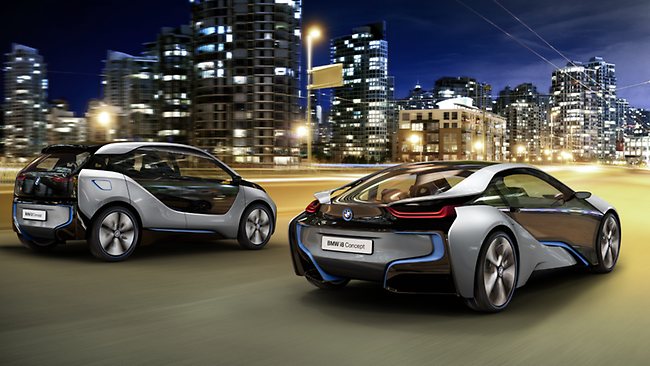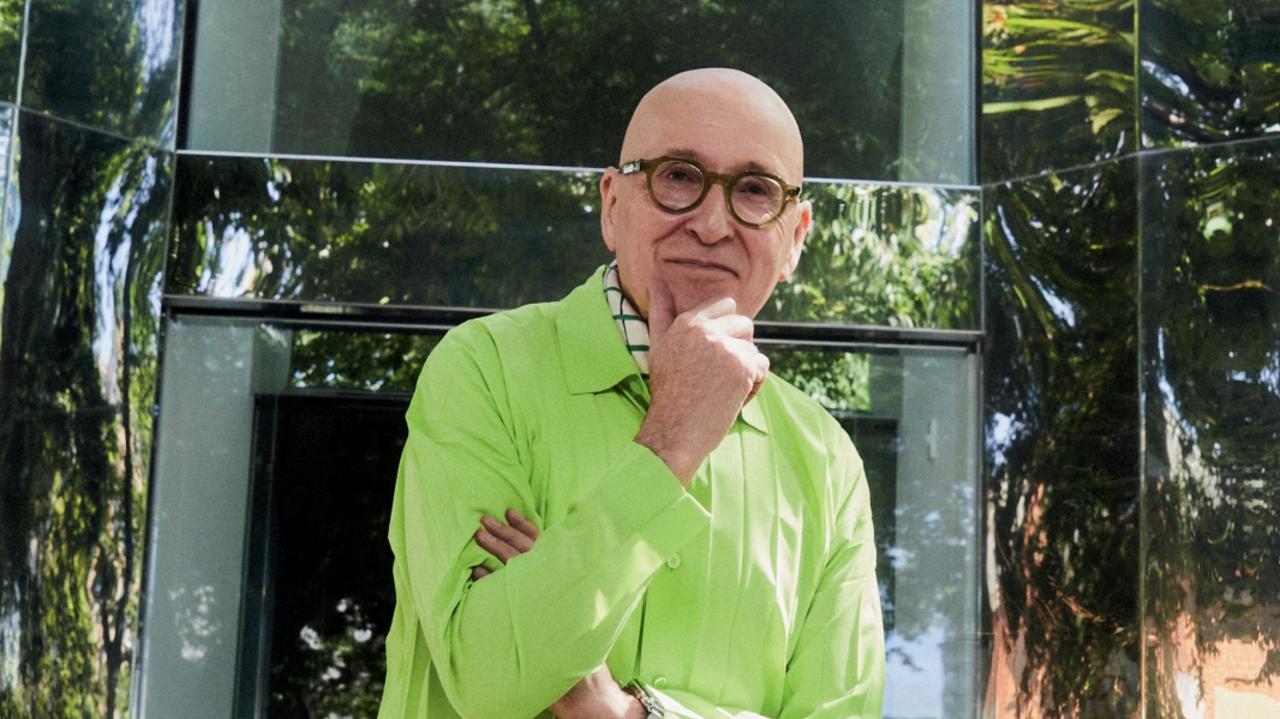Next app is the iCar
MEET the man who is instilling the values of a "good life" into the otherwise fast and furious BMW brand.
ONE irony of a successful career is that eventually you no longer do the task that got you noticed.
You administer, inspire and lead. So it is that Adrian van Hooydonk, who progressed through the studios at BMW to become group design chief in 2009, seldom raises a Staedtler in anger any more. Instead, he steers the look of three brands – BMW, Mini and Rolls-Royce – and acts as grid marshal for the company’s studios in Munich, LA, Singapore and Shanghai.
However, the irony is especially poignant for van Hooydonk because his star rose under previous design boss Chris Bangle. A decade ago, Bangle became notorious for taking BMW designs down a radical path. Previously conservative sedans suddenly looked strange and unorthodox, starting with the 7 Series of 2002. Critics decried the challenging aesthetics and brand loyalists rebelled. But many of the shapes, championed at board level by Bangle, were actually penned by van Hooydonk.
Now it’s van Hooydonk’s turn to captain a revolution. Four years ago, BMW set out to produce a zero-emission vehicle. In Germany in July, it unveiled its vision. The original goal had broadened from a single car into a whole range of eco-models under a new sub-brand called i. The first car, the i3, is a small four-door due in two years; the second is a 2+2 sportscar called the i8. More will follow.
The two concepts, which were publicly displayed for the first time at the Frankfurt motor show last month, confirmed what had gradually become clear over the past couple of years. With the i brand, BMW makes a big leap into a future that embraces electric and hybrid drivelines, the first mainstream use of carbon fibre for mass production and an adventurous new design language.
From the outset, says van Hooydonk, the company knew it needed to approach the task differently. It set up a special team to work on the zero-emission goal and gave it the freedom to question anything – even the brand itself. “Designers were part of the team from the beginning,’’ he says. “In normal projects, engineers and designers meet very often but in this project they were in the same space all the time. It was a radical departure from our normal processes.’’
With nothing sacrosanct, the team arrived at a layout for an electric car that positioned the batteries and driveline under the floor and passengers on top – totally different from conventional cars. “It’s most space-efficient,’’ van Hooydonk explains. “If you make the bottom compartment of the vehicle for drivetrain and battery, the top half is all interior, all for the occupants. You can make a vehicle that has a relatively small footprint and a maximum amount of interior space.’’
BMW soon saw the potential for a family of vehicles. “We didn’t want to just do a token car, one zero-emission car. We realised this whole thing about emissions is not going to go away.’’
With an engineering template outlined, the team set out to give the i cars a design language of their own. “Customers expect electric cars to look different but they don’t know whether they’ll look good. When people think of electric cars they might think of golf carts,’’ van Hooydonk says. “We wanted to create a product that is radically new. Zero emission, but appealing in an emotional sense as well. A premium electric car that people love when they see it.’’
The sub-brand’s environmental focus also needed to be mirrored by the nature of the cars. “We felt it would
be right for the cars to look light, because we would be using this extreme construction material that’s carbon fibre. We felt the cars should look clean, as they would be the first vehicles to have zero emission. And, of course, the cars should look futuristic.’’
It was a departure from the company’s usual priorities. “BMWs express movement, speed. Here, we want to express different things. A good life over a fast life, clean, light, safety, premium, cleverness.’’ Some ingredients, such as the grille shape, are carried over with a twist. “At first glance, it will be, ‘I think this is a BMW.’ Second glance will be, ‘But it’s not a BMW I’ve ever seen before, what’s that?’ That’s OK. We want to create designs that intrigue people and draw them in.’’
One of the project milestones was a concept called Vision Efficient Dynamics, which was a star of the 2009 Frankfurt motor show. As usual, it was the result of a competition between the studios and it introduced the idea of layering, which has become one of the central tenets of i design. “We did a sketch competition, like we always do, and the briefing I gave the team for the [Vision Efficient Dynamics] concept car was, ‘I want to see something that is almost science fiction but I want it to be positive science fiction’,’’ van Hooydonk recalls.
“Science fiction movies of the late ’90s and so on were always pessimistic – Blade Runner and those kind of movies. I said, that’s not the kind of science fiction I want. I would like – I think it’s our job, as designers – to show that all this technological development can lead to something very positive.’’
The Vision Efficient Dynamics car has evolved into the i8 concept, which is a preview of the final sportscar. The ideas were also implemented in the more practical i3 and set themes for the whole i sub-brand. Layering can be seen all over these cars, inside and out, but is most visible in the rear cabin pillar, or C-pillar, on the i8.
“On the i8, it’s an aerodynamic feature, the air flows through it. I don’t know of any car that has done that before,’’ van Hooydonk says. “It allows the greenhouse [ie, the cabin] to have a teardrop shape.’’ Similar lines can be seen in the i3, although the C-pillar is enclosed and made of glass. Large areas of glass are a feature of both cars, and help increase the impression of lightness.
Even though studios use powerful computer software to work up their ideas, selected designs are invariably created as full-size clay models to test how they work in three dimensions. These are hand-finished before being scanned back into computers for the next stage. However, the design team was stretching the limits of traditional methods. “There are certain elements in the i8 – like the C-pillar – which are very hard to do in clay,’’ van Hooydonk says. Rather than abandon the idea, the team changed the way it works, using computers from beginning to end.
Working with carbon fibre helped realise some of the adventurous shapes but it wasn’t there for design reasons. Carmakers are increasingly turning to the material because it’s half the weight of steel and incredibly strong. Reducing weight has huge benefits in every aspect of a vehicle but it’s crucial for the new generation of electric cars. Their batteries are so heavy, they need to compensate by cutting kilos wherever they can. It became an over-riding priority.
“Engineers have always taken it seriously but to us in the design department we were used to hearing project leaders say that solution A costs this much and solution B costs more. So could we agree on solution A? This time, everything was geared to bringing the weight down because it brings you range.’’
Carbon fibre is expensive and time-consuming to produce and until now only a few of the most expensive supercars have been entirely constructed from it. With i, BMW takes carbon fibre into the mainstream, after years finding ways to reduce its cost and speed the manufacturing process. And the i cars leave you in no doubt about what they’re made of. “We’re particularly keen on the aesthetic of carbon fibre because we use it as a structural material, not a decorative element,’’ van Hooydonk says. “It has an attractive aesthetic and as such we wanted to show it.’’
It’s just one of the material innovations. The wood, leather and chrome that usually trim premium cars needed a twist, van Hooydonk says. “So each material has been specifically developed with sustainability in mind. We will eventually offer leather that is coloured without chemicals, cloth and other materials that are either recycled or can be recycled.
“We believe that customers will look through the whole vehicle. Zero emissions might be one thing, but they will then want to know, ‘How did you produce those cars?’ and ‘What kind of material is this?’ ”
When the i3 and i8 first appear on public roads, they will look radically different to other traffic, even more revolutionary than the sequence of designs rolled out under Bangle. As controversial as those ideas were at the time, they have influenced virtually every car design since.
For van Hooydonk, it doesn’t matter whether others follow. “If it influences other carmakers it’s a nice form of flattery but not my goal,’’ he says. “We want to do design that is authentic and expresses what people can experience with these vehicles.’’
And controversial or not, the results are reward enough. “These type of projects are a once-in-a-lifetime opportunity. How often do you get all-new technology, all-new proportions and an all-new brand and you can design everything?’’



